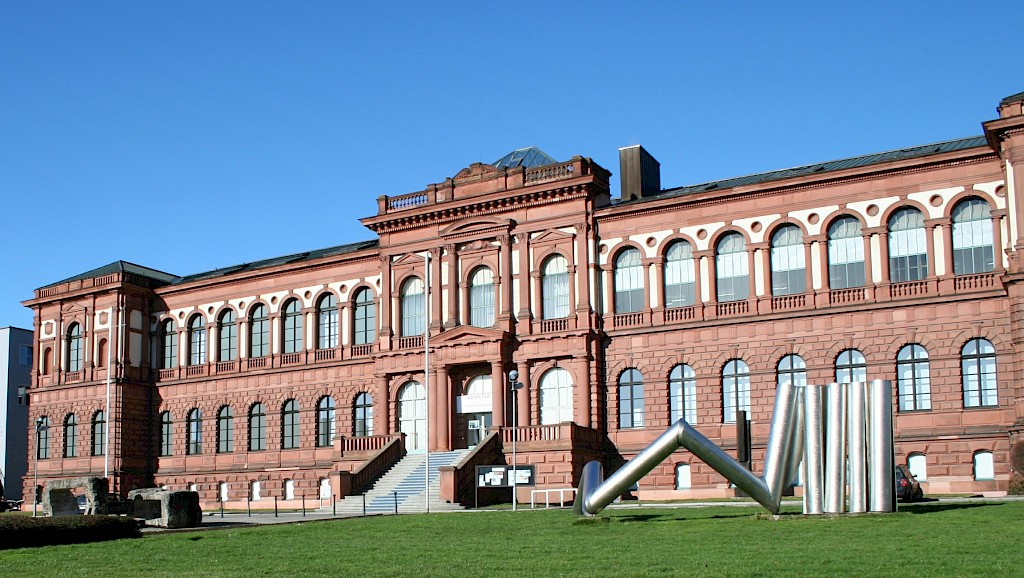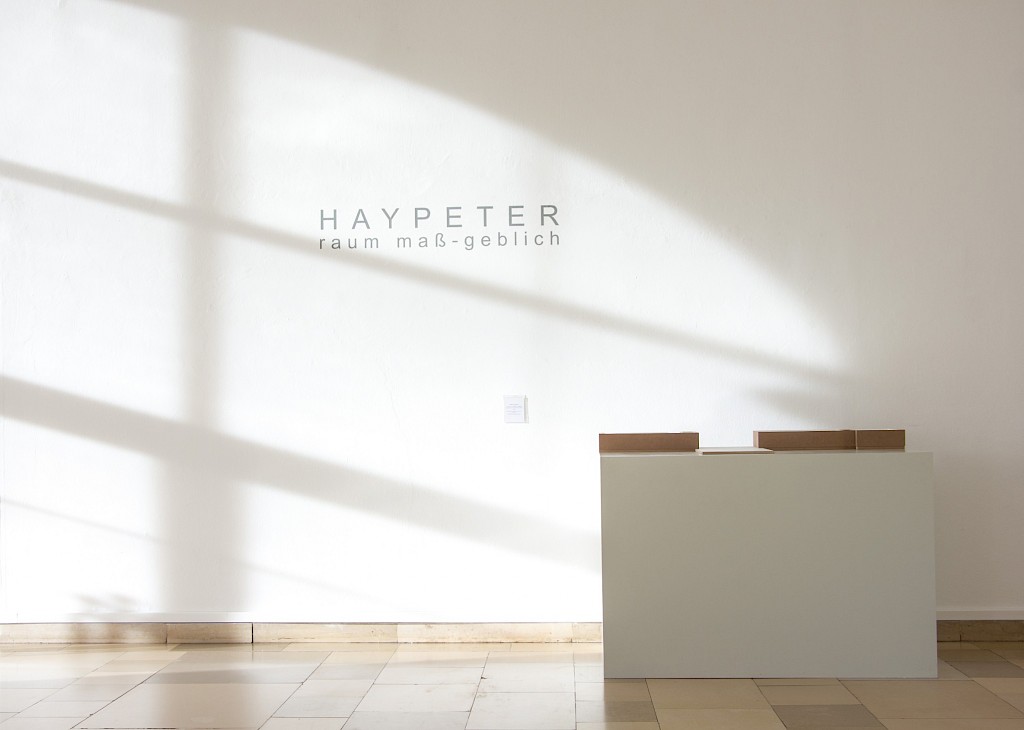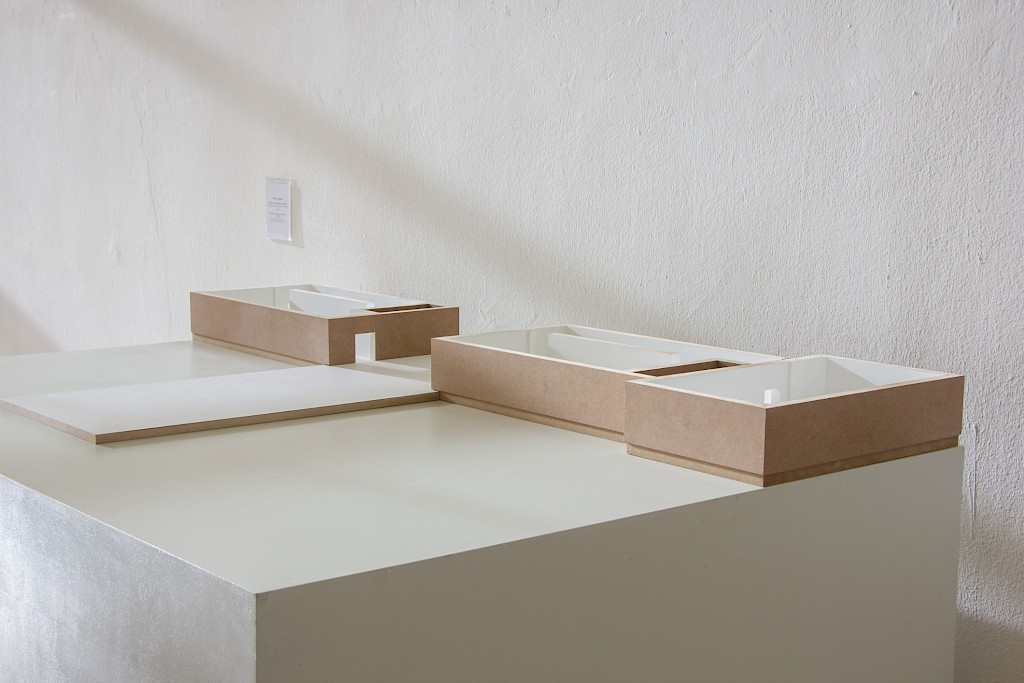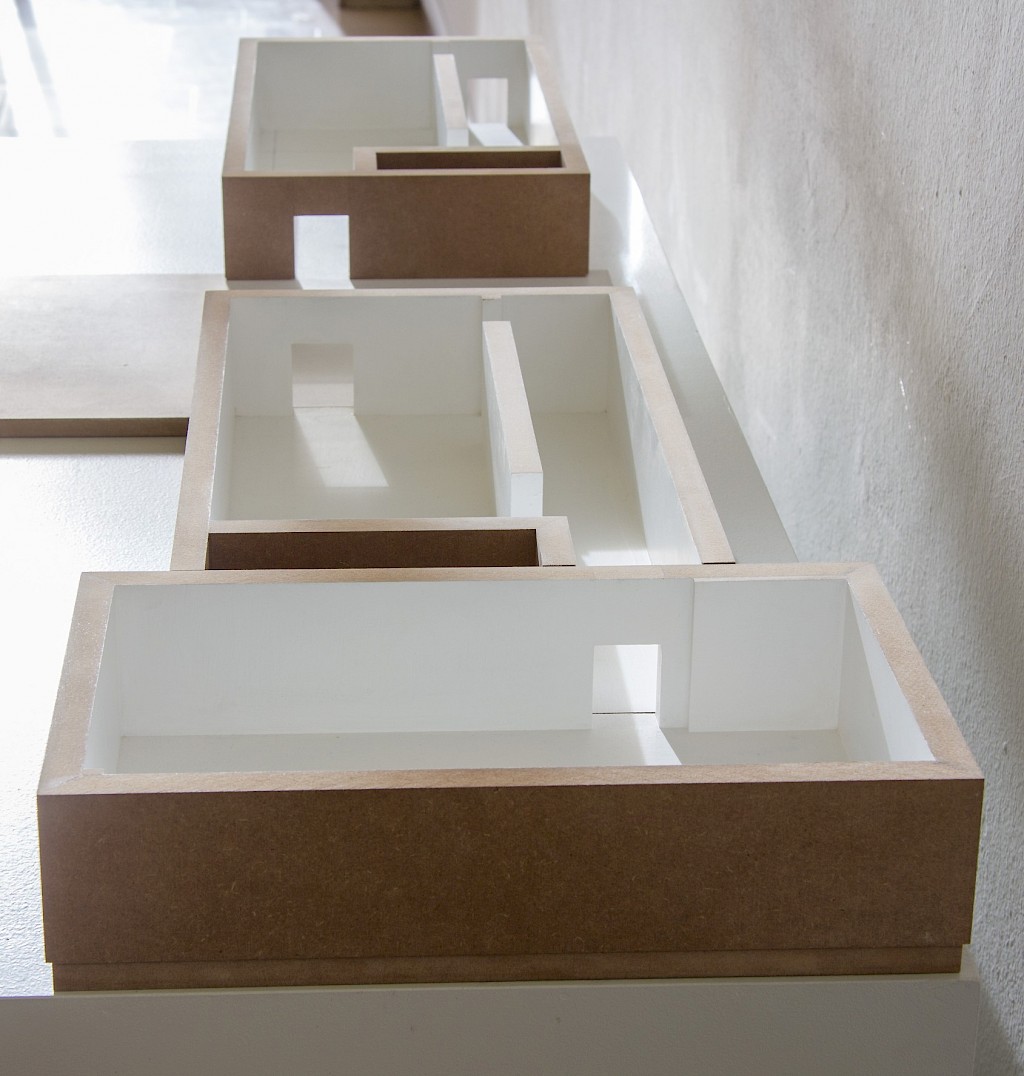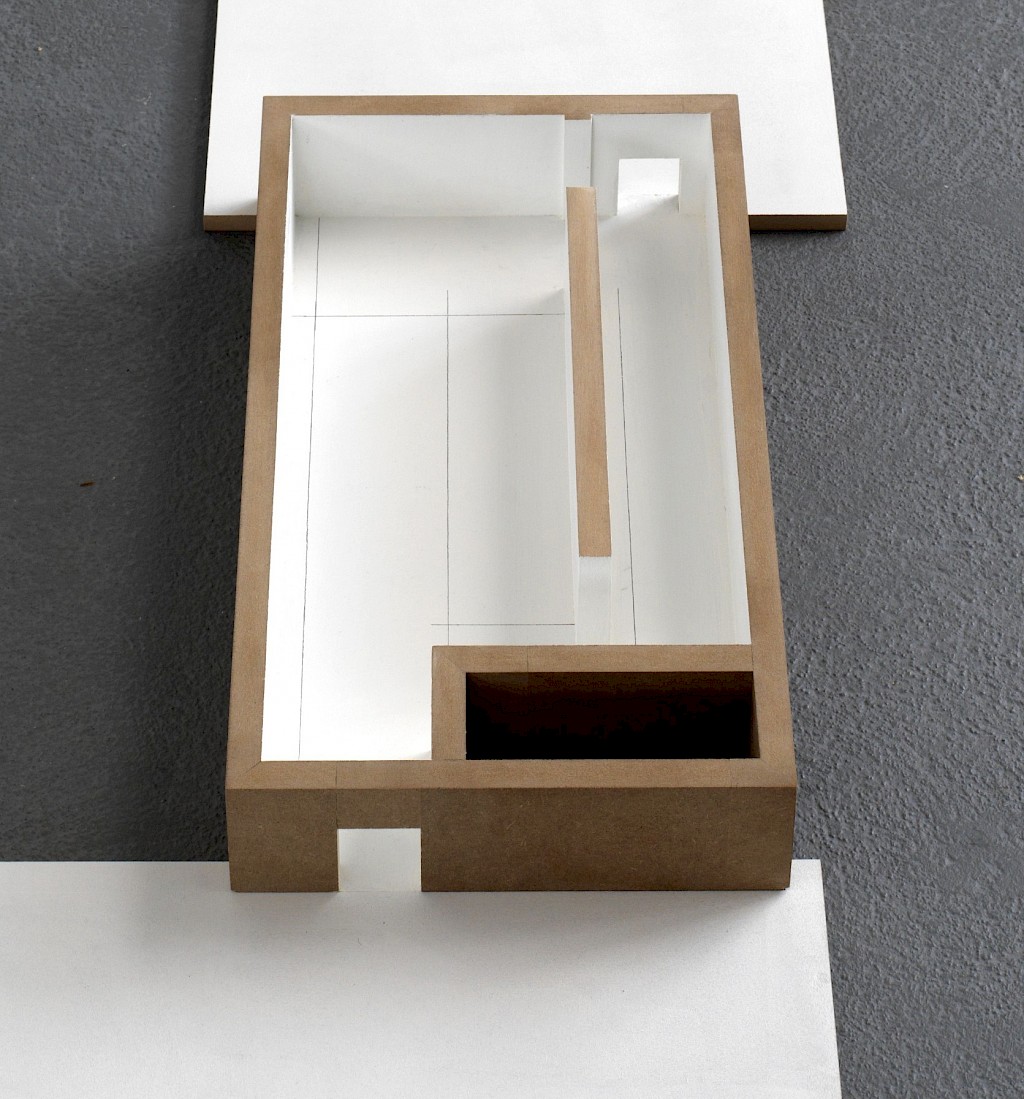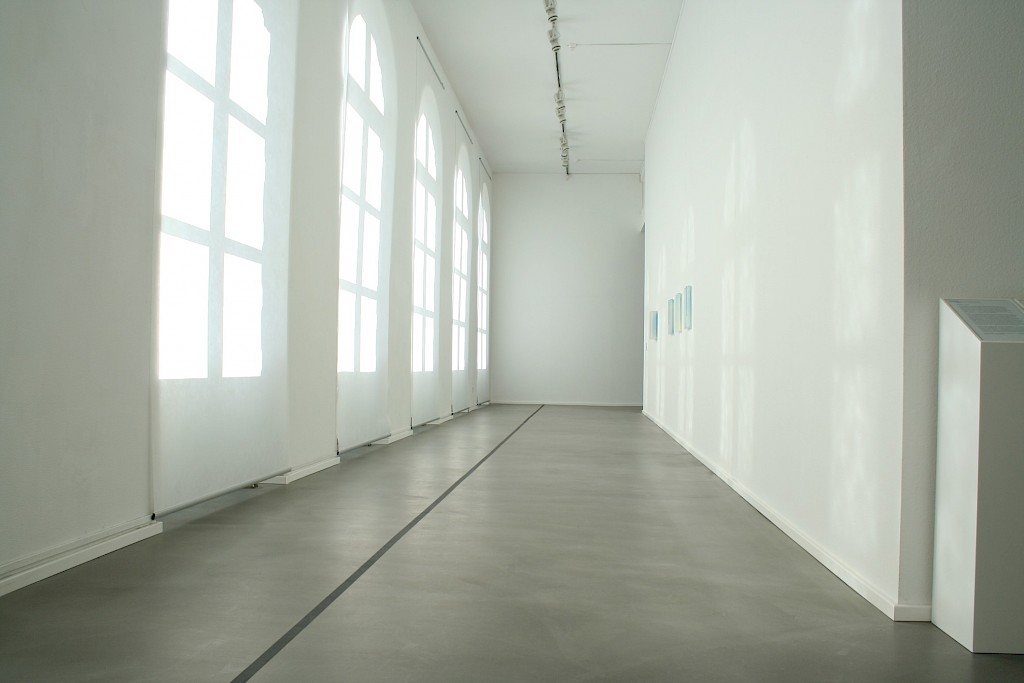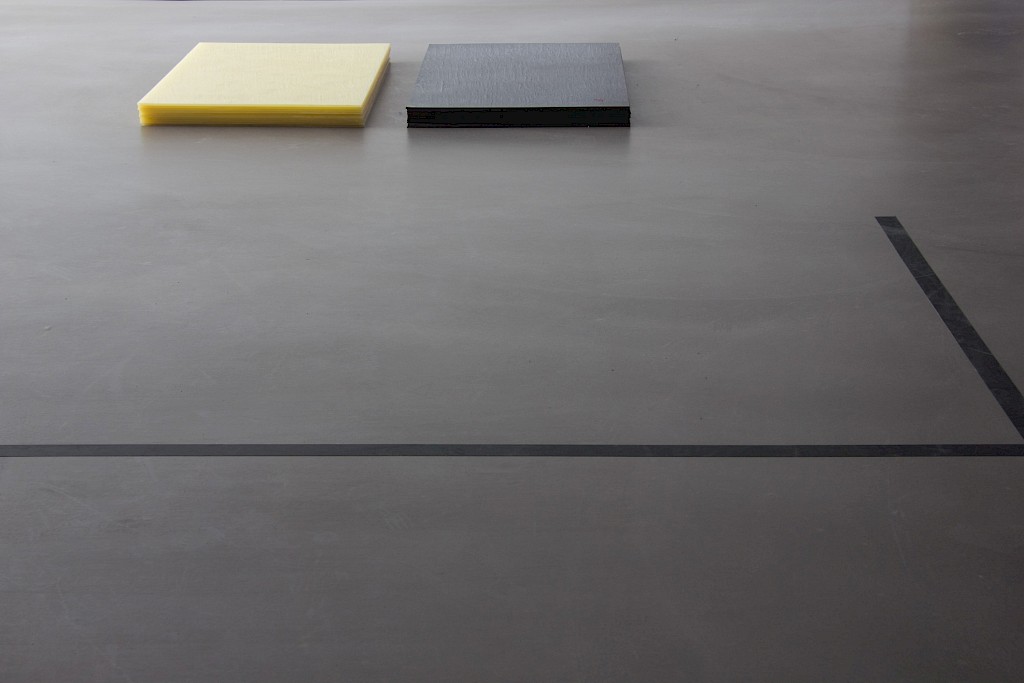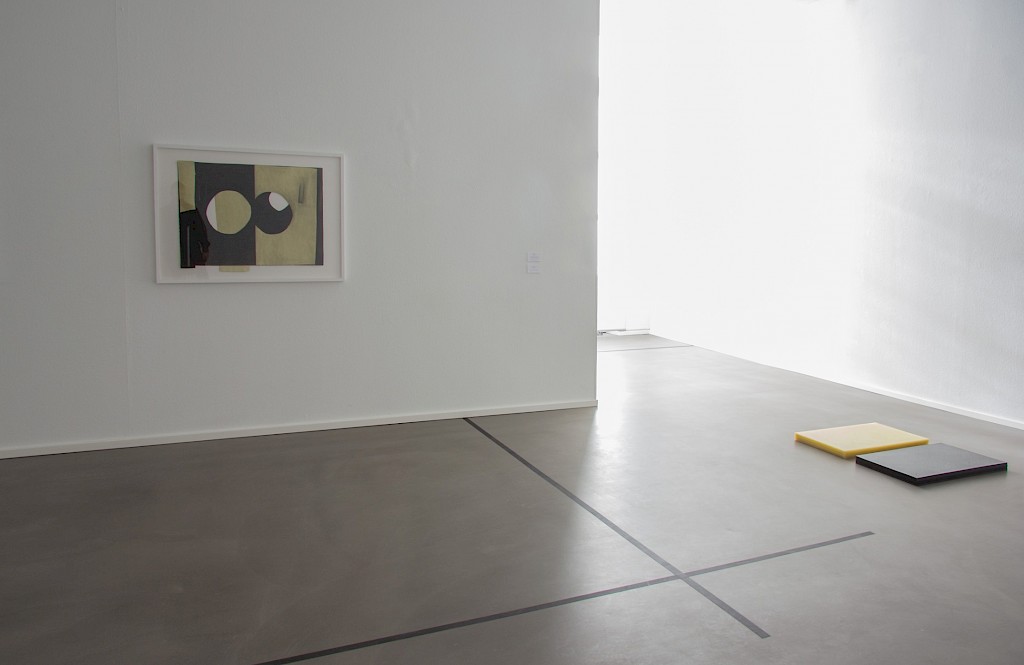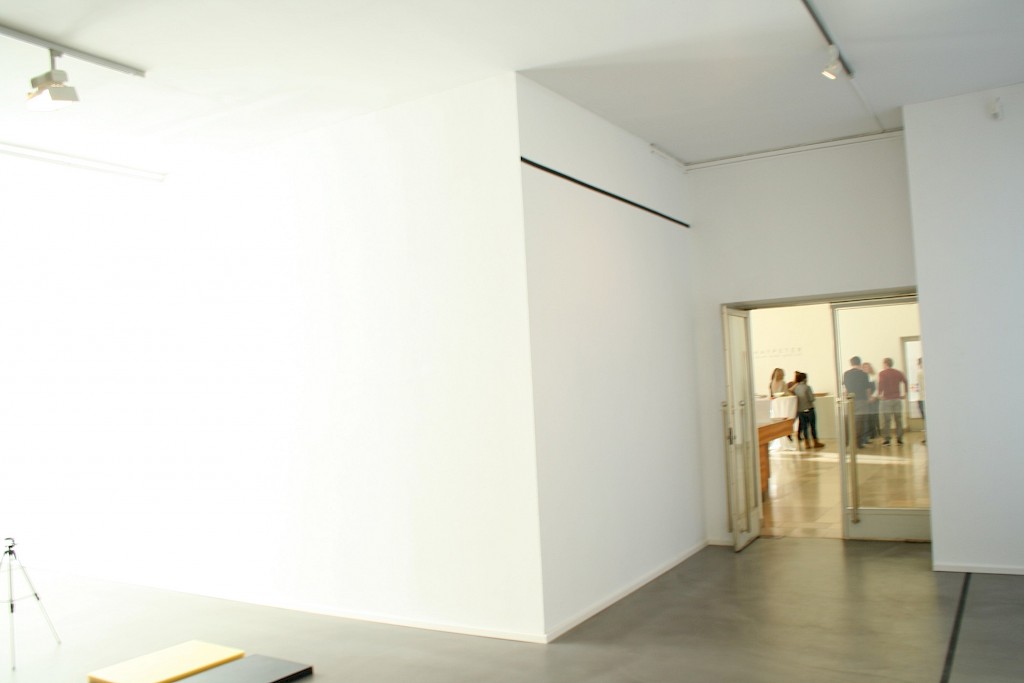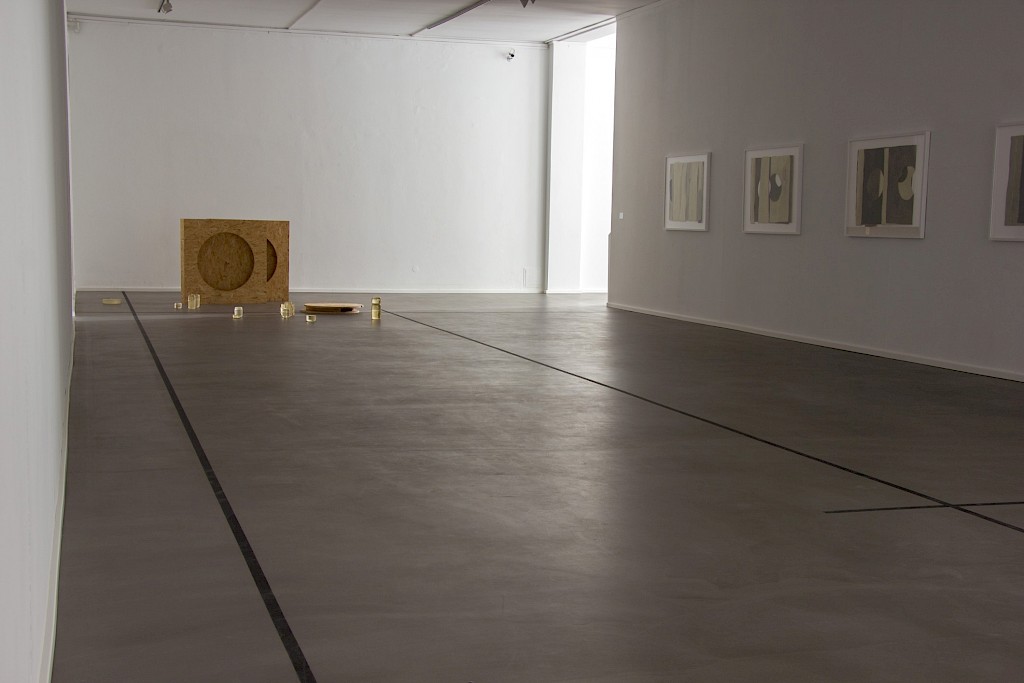Playing field
2013 East wing of the Museum Pfalzgalerie Kaiserslautern
“. . . so I guess I am a spaceworker.”
Werner Haypeter
Peter Lodermeyer
I.
Vertical and horizontal lines, grid forms, squares and circles – the vocabulary of forms found in Werner Haypeter’s work apparently takes recourse to basic forms of geometric abstraction. This has induced some critics to label his extensive and widely ramified work as being “concrete art” or “constructivism”. But in doing this, however, they ignore the fact that although Haypeter adopts a tried and tested repertory of modernist forms, he uses it in a different function, thus newly interpreting it – precisely in the sense of overcoming a formalist concept of art. Haypeter’s work may not be completely understood if we approach it from a vantage point of formal analysis. Rather, we come closer to his intention if we take a good look at what is arguably the most important constant throughout his work: the attention he gives to space. In answer to my question whether he actually defines himself as a sculptor or more as a painter in the broadest sense, he once responded jokingly: “I am always concerned with transparency and layering, i.e. with space. My works are spaceworks – so I guess I am a spaceworker.”
Space, for Haypeter, is no abstract matter, it is not only mathematically or physically defined, but always socially determined as well. For him, space is defined as an “ensemble of relationships”, to quote philosopher Michel Foucault, and these relationships are, first and foremost, social in nature. To Haypeter’s way of thinking, spaces are essentially characterized by processes of work and function, by divisions of work, customs, historical circumstances, neighborhoods, etc., in short, by social structures. Consequently, something always involved here as the departure point for all of his artistic decisions in terms of a space prototype is: his studio (fig. 1, p. 33). Even as a student at the Düsseldorf Academy, he took a lively interest in the social aspects for what a studio is and how it functions in a social context. At the end of the 1970s, he was a member of the “Düsseldorf Wall-Painting Group”, which – through public actions and huge wall paintings took up contemporary political themes, fighting against real estate speculation, or rather, for the preservation of affordable living space in Düsseldorf-Bilk.1 Even today, issues concerning the social environment of the studio, rent prices, and ownership structures are important to him, although the days of loud agitation are long since a thing of the past. Werner Haypeter’s studio is located in a Düsseldorf studio-house. The interaction among the artists who work there, the operations within the house, the contact to the neighboring workshops and businesses, whose specific knowledge of material and craftsman‘s know-how he uses when needed – all of this goes, as if it quite naturally, into the artistic work. For Haypeter, art is no isolated, autonomous field, no place of sudden flashes of genius and lonely inspiration. Art is rather a method for intelligently plugging into existing social systems, taking up their impulses, making the relationships clear and – very importantly – for undertaking deliberate changes.
[Text: "... so I guess I am a spaceworker. Werner Haypeter", Peter Lodermeyer in: HAYPETER raum maß-geblich". Ausstellungskatalog mpk - Museum Pfalzgalerie Kaiserslautern, Ed.. mpk, Museum Pfalzgalerie Kaiserslautern 2013/2014 p. 41. Translated by Elizabeth Volk]
